This Guide To Brutalism In Berlin is a simple and easy way to explore the beauty of concrete in the German capital.
From the weird-shaped Bierpinsel in Steglitz to the battleship-style construction of the Mäusebunker in Lichterfelde, Berlin has some of the best examples of Brutalism architecture in Europe; here, I guide you through some places.
But before we go into the locations, we must discuss Brutalism. This architectural style emerged in the late 1940s, after the end of the Second World War.
The goal was to give form to the function of the early Modernism movement and shape a new society with a focus on rationally designed buildings where people could put ideas of social emancipation into place. Brutalism was more than just something aesthetic. The concept here was to change society.
Concrete was the means to an end here since it became a readily available, cheap, and quick way for cities to rebuild places where people gather and restore the cityscape into what it once was.
A Short Guide to Brutalism Architecture in Berlin
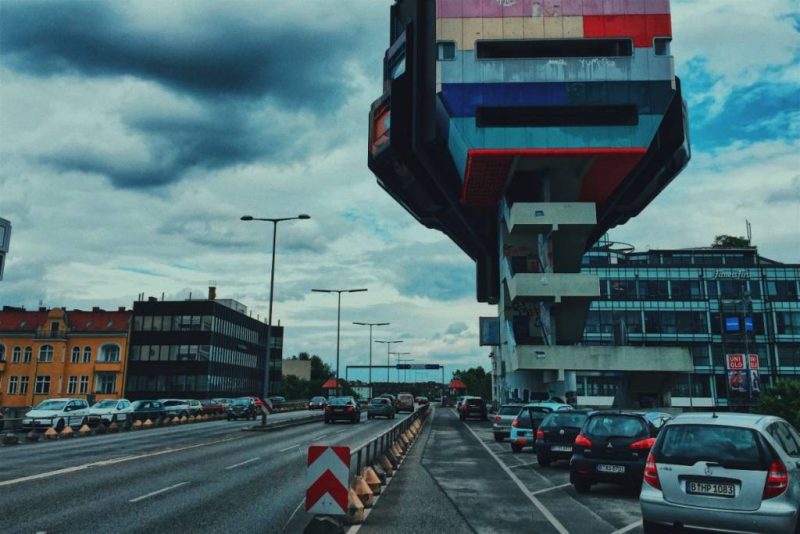
Brutalism became important to Berlin due to its social ambitions and financial cost. Since the city was left in ruins, Brutalism restored the cityscape quickly and left the past behind.
Some of these buildings were demolished throughout the years, and these monuments to an ambitious futuristic society only live in old postcards.
However, there are still some that remain, spreading around Berlin and influencing new standards of architectural beauty.
Here are our favorites for this short guide to Brutalism in Berlin.
Bierpinsel in Steglitz
Bierpinsel is the work of Ralph Schüler und Ursulina Schüler-Witte, an architect couple who also designed the brutalist ICC Conference Center in Berlin-Westend. Visually speaking, the original concept that came from the couple was that of a tree shape, but the people that live around it saw something else, and this is how it got the nickname Bierpinsel, which can be translated as beer brush.
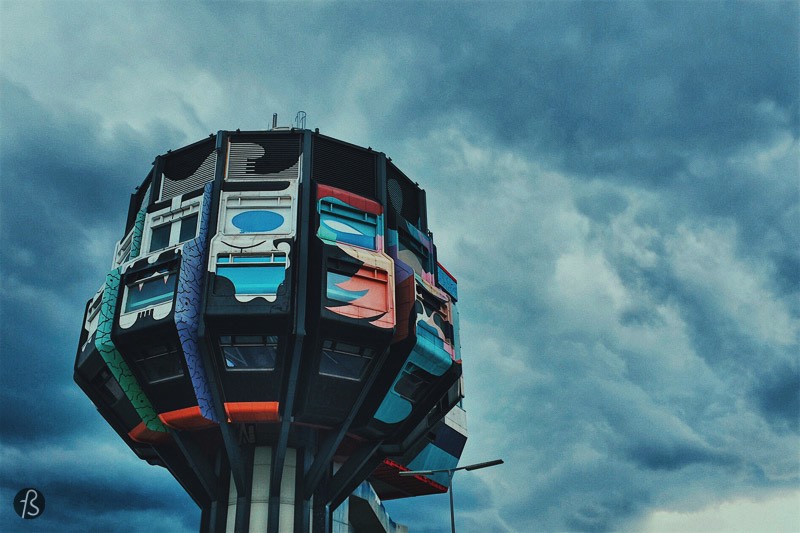
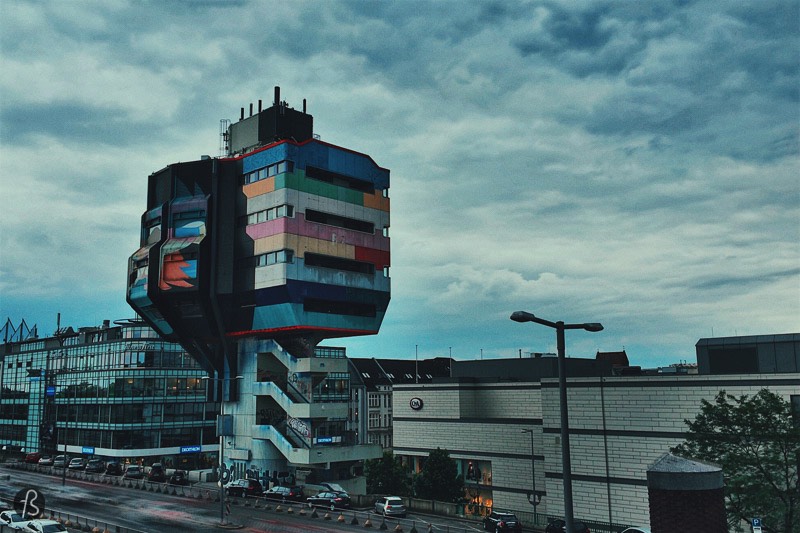
The Bierpinsel can be found next to a highway in the middle of Steglitz. It closed its doors to the public in 2002 for construction work. Back in 2006, it closed its doors to the public and never opened again. Before it shut down, it used to house restaurants, bars, pubs, and even a nightclub across its four levels. But none of it exists today.
Mäusebunker in Lichterfelde
The Central Animal Laboratory of the Freie Universität, known as the Mäusebunker, is one of Berlin’s best examples of Brutalist architecture. Designed by Gerd Hänska, this construction project took over a decade of development due to opposition from the neighborhood and animal rights activists.
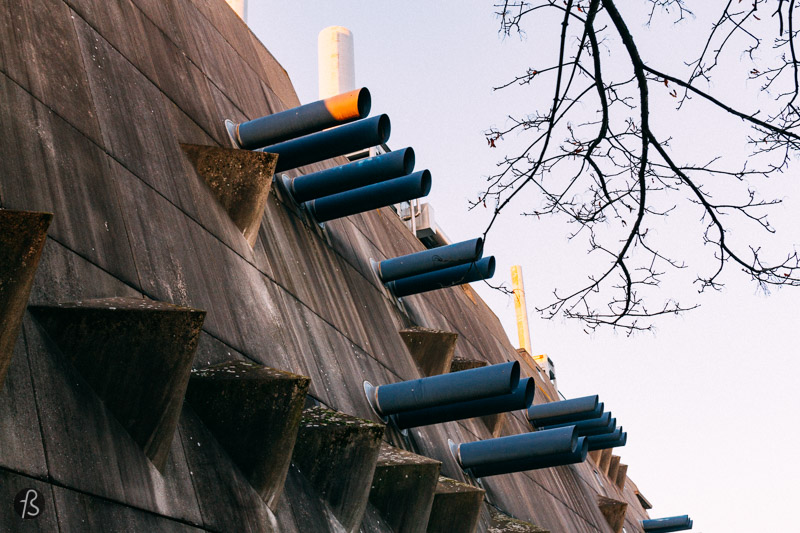
The basic shape of the Mäusebunker is interrupted by blue cylindrical shapes that work as ventilation pipelines and build a battleship on land look. It is menacing to some and quite enjoyable for others.
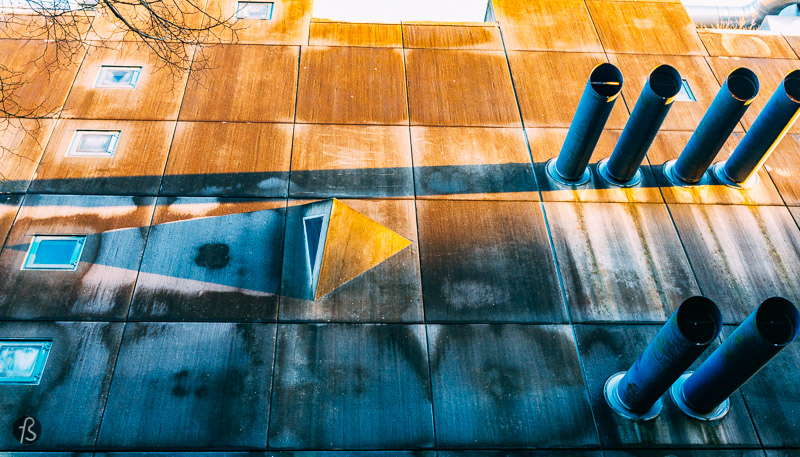
The Pallasseum in Schöneberg
Built between 1974 and 1977, after the Berliner Sportpalast was demolished, the Pallasseum is a prime example of brutalist architecture as an example of modern living. Designed by a group of architects that included Jürgen Sawade, Dieter Frowein, Dietmar Grötzebach, and Günter Plessow, this residential complex comprises concrete and houses over two thousand people.
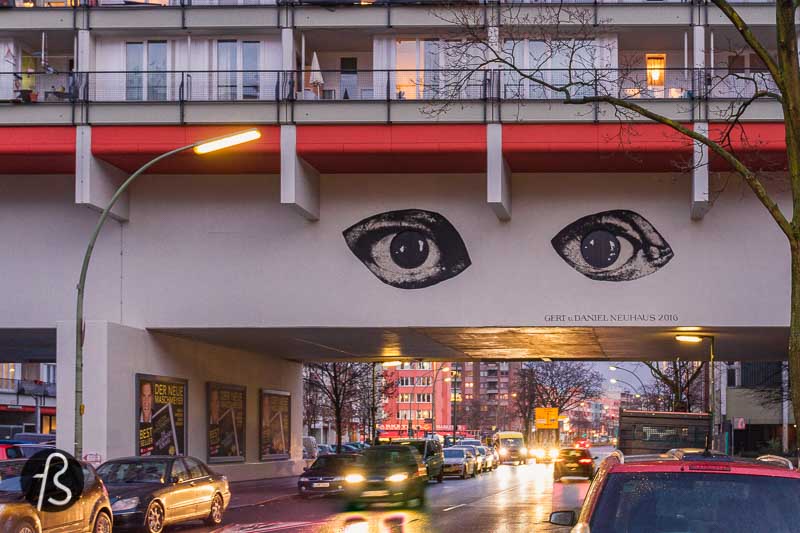
We mentioned the Pallasseum when we wrote about bunkers in Berlin since the building was built over the Hochbunker Pallasstraße, which was used as a location for the movie Der Himmel über Berlin by Wim Wenders.
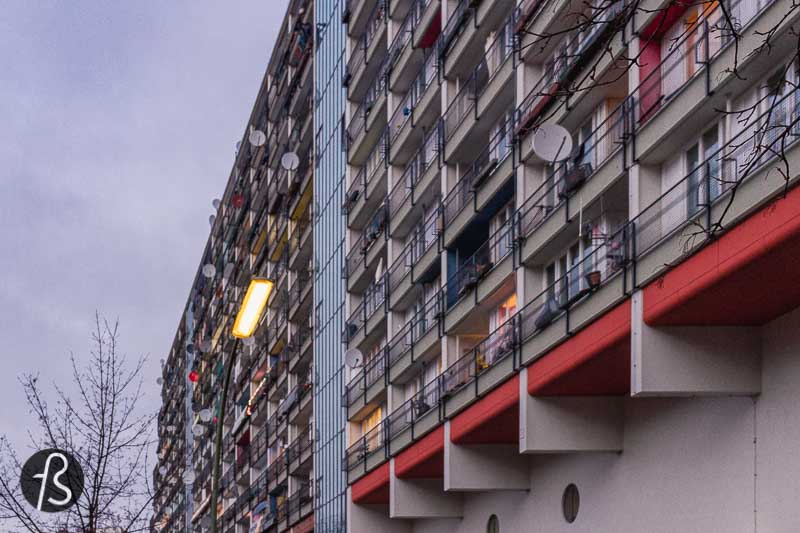
St. Agnes Kirche in Kreuzberg

In the aftermath of the Second World War, much of Berlin was destroyed, and one of the areas that suffered the most was Kreuzberg. Especially this section that led troops to fight closer to where the last pieces of nazi resistance in the city stood. This is why this part of the city has gone through many urban regeneration projects since then.
One of the most visually exciting projects in the area is the concrete building called St. Agnes Kirche. This was a church that was destroyed and rebuilt in a brutalist style by 1967, according to the plans by Werner Düttmann.
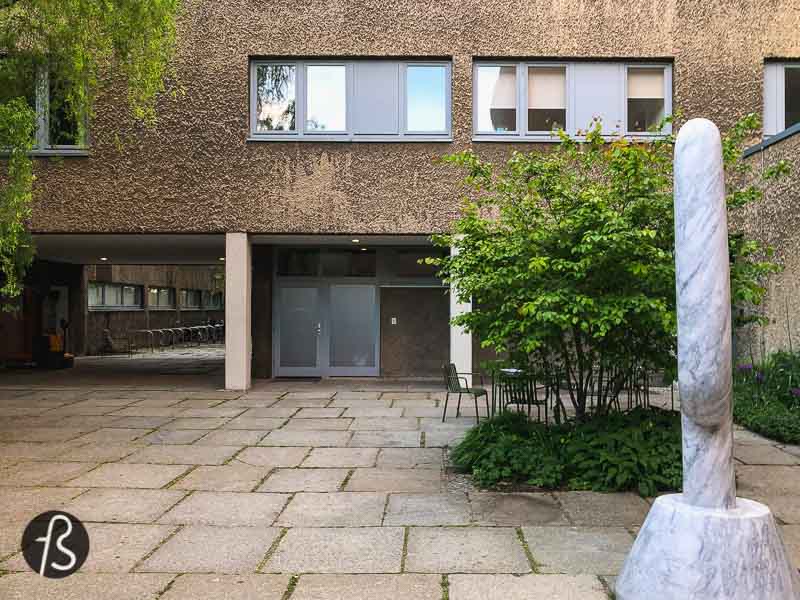
At first, this was a catholic church and held catholic services until 2004. After, it was rented to a protestant church, but in 2011, it was leased to an art gallery. This is why you’ll find different sculptures and art pieces outside the building from time to time.
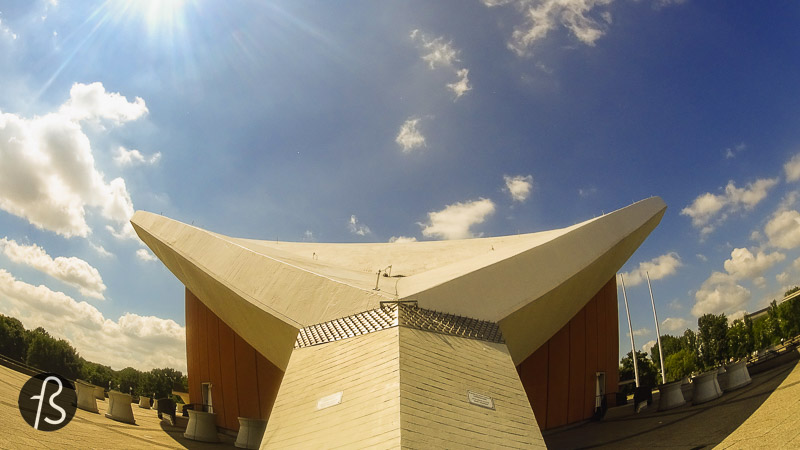
HKW or the Haus der Kulturen der Welt in Tiergarten
Most people call it the HKW, Haus der Kulturen der Welt in German translated as the House of the Cultures of the World. Designed by American architect Hugh Stubbins as part of the Interbau Program in 1957, which also gave Berlin the Hansaviertel, this curved structure looks magnificent.
HKW was built as a symbol of freedom, an architectural analogy for what West Berlin stood for, and it was placed next to the border between East and West. It became a landmark of the post-war landscape in Berlin, one of our favorite buildings in the city.
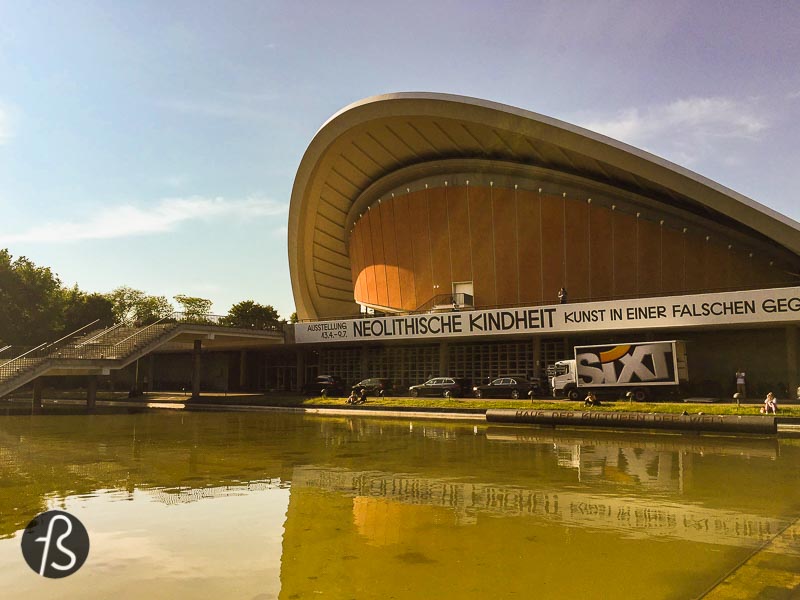
I enjoyed working there as a photographer during the Transmediale in 2013. During those days, I walked around the building and explored everything I could. Some of the pictures here are from these days.
Tschechische Botschaft, the Embassy of Czechoslovakia in Wilhelmplatz
The Embassy of Czechoslovakia in Mitte can be found around Wilhelmplatz since the 1970s when it moved from Prenzlauer Berg. The design stands out from the other buildings in the area since its socialist brutalist style is unique.

The design comes from Věra and Vladimír Machonin in collaboration with Klaus Pätzmann, and the building they created seems to float above the ground. Some people even joke that it looks more like a UFO than a building since its windows give it a futuristic look.
We love it, but it’s a complex construction to document in pictures since its massive size and position on the corner is hard for some photographers like us.
Klinikum am Urban in Kreuzberg
The Klinikum Urban was founded in 1887 in Kreuzberg, next to the Landwehr Canal. During the Second World War, it was heavily damaged, and in 1966, the then-mayor Willy Brandt laid the foundation stone. This would be the first hospital in the city after the end of the war, and the inauguration was such an event that even Gustav Heinemann, the German president, was there.

Designed by the architect Peter Poelzig, the v-shaped construction is made of reinforced concrete, and it spans nine stories, housing more than 700 hospital beds that are still used today.
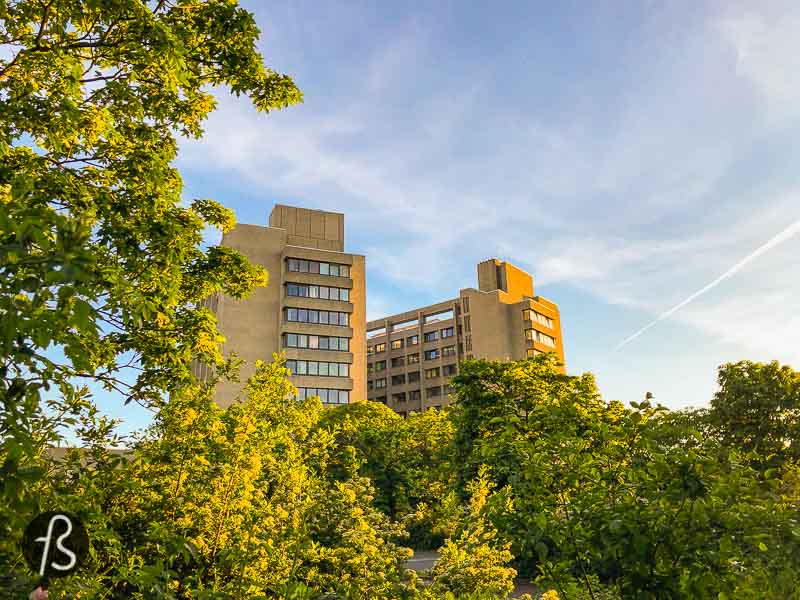
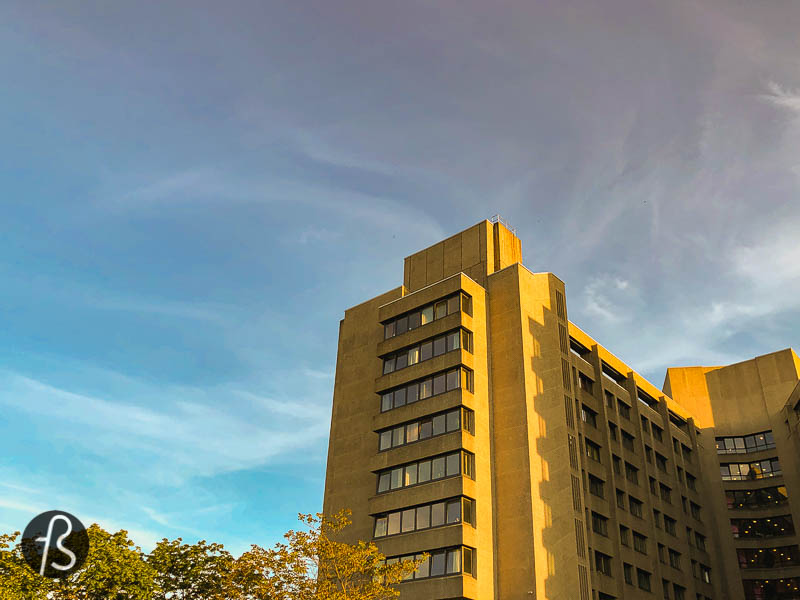
The Paul Gerhardt Church in Schöneberg
The history here is similar to other locations in Berlin: a building was heavily damaged during the Second World War, and a new one replaced it. The original Paul Gerhardt Church was one of the few Art Nouveau churches in Berlin, and it defined the cityscape of the neighborhood for years.

The replacement church was designed by Hermann Fehling, Daniel Gogel, and Peter Pfankuch and built between 1958 and 1962 with its angular shapes and exciting angles.
I used to cycle to the office on Hauptstrasse in 2017, and this church was one of the best things to watch while passing by. This was when I started researching it.
Concrete Wonders: Exploring Brutalism in Berlin
If you’re looking for concrete buildings in Berlin, a few don’t match the principles of Brutalism. Still, they are interesting, like the historical Schwerbelastungskörper and the Aerodynamic Park in Berlin-Adlershof.
We also have an article for you if you are interested in architectural travel.